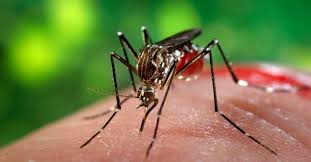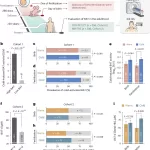When people travel abroad, they often return with more than just souvenirs and memories. Unfortunately, many travelers also bring back health issues caused by exposure to unfamiliar pathogens. A new travel app, developed by researchers at the University of Zurich (UZH) in collaboration with the World Health Organization (WHO), is shedding light on how frequently these illnesses occur. The data, now published in BMJ Open, has the potential to track outbreaks and control the spread of diseases like dengue and novel influenza viruses.
A Real-Time Reflection of Global Health
“Travelers are an excellent reflection of what’s happening around the globe,” says Patricia Schlagenhauf, the lead researcher from UZH’s Epidemiology, Biostatistics and Prevention Institute. She points out that travelers don’t just experience local outbreaks—they sometimes contribute to spreading diseases internationally. A recent example is the case of mpox in Sweden, brought back by a traveler returning from Africa.
The app, known as Illness Tracking in Travelers (ITIT), enables users to log daily symptoms through a simple, user-friendly questionnaire. This data is then combined with location, climate, and air quality information, offering valuable insights into the environmental conditions associated with specific illnesses.
Analysis of Global Travel Data
Between April 2022 and July 2023, researchers analyzed data from 470 trips taken by 609 travelers across multiple continents. The findings revealed that health issues occurred on more than one-third of these trips—a surprising discovery that underscores the prevalence of travel-related illness.
The most frequently reported symptoms were gastrointestinal issues, affecting 19% of trips, particularly those to Asia. Interestingly, these problems were less common among travelers to Africa. Women reported symptoms of diarrhea more often than men, though it remains unclear whether this is due to biological differences or if women were more diligent in recording their symptoms.
Respiratory illnesses, including common colds, were reported by 17% of travelers, especially those visiting Europe. Schlagenhauf advises travelers to pack a first-aid kit, even when visiting low-risk countries, and include medications for diarrhea, nausea, headaches, and fever—symptoms that frequently disrupt travel plans.
A Tool for Outbreak Detection
The ITIT app isn’t just a tool for travelers—it’s also a cutting-edge system for monitoring and controlling disease outbreaks. Researchers hope to expand the app’s user base to collect larger datasets, which would allow for automated analysis using artificial intelligence. With more data, the app could detect early signs of outbreaks like dengue or mpox, providing faster and more efficient reporting than traditional systems.
“This real-time, bottom-up approach is much faster than the top-down reporting systems currently in use,” Schlagenhauf explains. For example, in Switzerland, it can take months for public health authorities to publish official case numbers. Mobile technologies like the ITIT app offer an innovative solution, potentially revolutionizing how global health authorities track and respond to travel-related illnesses.
A Safer Future for Travelers
With its real-time tracking capabilities and the potential to help detect disease outbreaks early, the ITIT app is poised to make travel safer and healthier. As more people participate in this data-driven initiative, the global health community may be better equipped to manage and mitigate the risks associated with travel-related diseases.
For more information on the study, see Thibault Lovey et al.’s paper, “Surveillance of global, travel-related illness using a novel app: a multivariable, cross-sectional study,” published in BMJ Open (2024).












